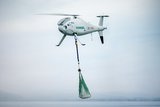Energid to work on TARDEC UGV programme
Energid Technologies will develop digital simulation to enable safety testing of autonomous military convoys as part of a programme managed by the US Tank Automotive Research, Development, and Engineering Center (TARDEC).
Energid will develop a solution to enable unmanned road vehicle control software to be tested for safety to the level required for fielding. This is a typically expensive and time consuming task that is currently a barrier to the deployment of autonomous vehicles in most real-world environments.
James English, CTO, Energid, said: ‘It is the cost and difficulty of guaranteeing safety that has prevented autonomous vehicles from being used as much as we would hope and expect.’
To overcome this challenge, Energid's method applies autonomy algorithms to simulated vehicles in a way that actively seeks out problems. By combining randomised dynamic simulation with optimisation for finding algorithmic failures, safety issues can be detected earlier and at reduced cost.
Ryan Penning, senior engineer at Energid, said: ‘Energid's software will find those one-in-a-million events that rarely happen but have serious consequences when they do. Understanding and removing these hazards is critical.
‘We have powerful software technologies to simulate vehicle movement and wheel-road interaction. Through this project, we will apply them with the goal of large-scale acceptance and use of autonomous vehicles.’
Energid's software uses a novel architecture with powerful algorithms for simulating both sensor data and the dynamics of articulated bodies.
The work will apply computational methods the company developed previously for NASA, the US Department of Defense, and the US National Science Foundation; and will leverage Energid's Actin and Selectin commercial robotics software toolkits, which have been used to design, control, and simulate advanced robotic systems.
More from Uncrewed Vehicles
-
Jammer resistant drone designs spark search for countermeasures
The Russia-Ukraine conflict has driven another stage of evolution for drones and the counter measures to defend against them.
-
![L3Harris launches Amorphous software for control of uncrewed platforms]()
L3Harris launches Amorphous software for control of uncrewed platforms
The new Amorphous software is a universal controller that would allow a single operator to control a swarm of “thousands” of uncrewed systems, from drones to underwater platforms.
-
ideaForge unveils new UAVs at Aero India 2025
India UAV supplier ideaForge has launched the Netra 5 and Switch V2 drones at Aero India 2025, boasting of enhanced endurance, AI-driven autonomy and improved operational capabilities.
-
![Shaping the future of defence: What 2025 holds for the global drone market]()
Shaping the future of defence: What 2025 holds for the global drone market
The UAV market is experiencing unprecedented growth, with innovations in technology and battlefield applications driving demand across military sectors. From the battlefields of Ukraine to NATO exercises and beyond, drones are transforming how wars are fought and supported.
-
![Maris-Tech confirms customers signing up for Jupiter Drones codec and AI-powered system]()
Maris-Tech confirms customers signing up for Jupiter Drones codec and AI-powered system
Launched at AUSA in October, the company’s multi-stream video codec is attempting to bring a new lease of life to drone technology through its AI accelerator.
-
![AUSA 2024: Quantum-Systems targets big 2025 with UAS developments]()
AUSA 2024: Quantum-Systems targets big 2025 with UAS developments
Quantum-Systems has been upgrading its UAS family, with new versions of the Vector, Reliant and Twister drones set for release throughout 2025.






















